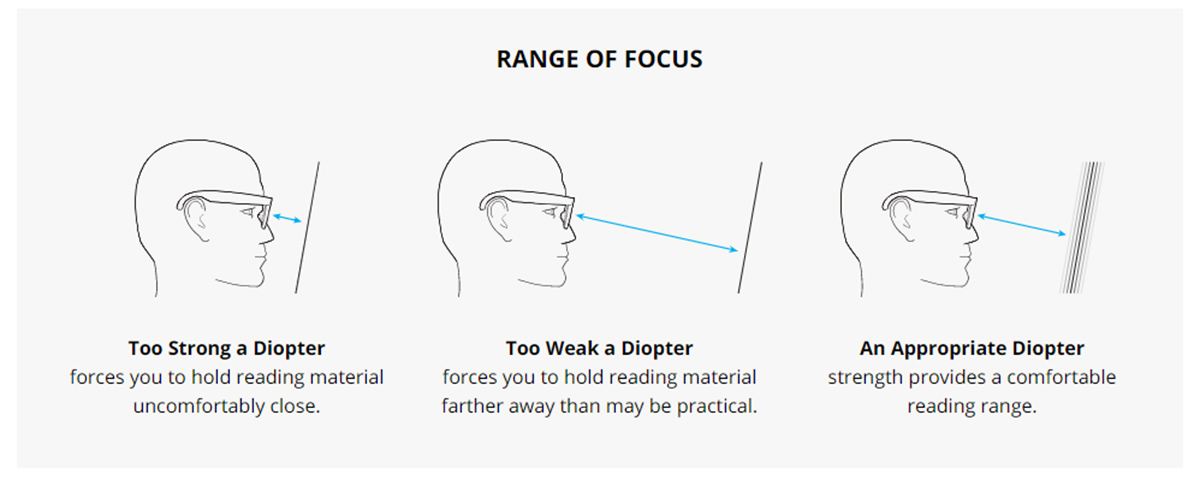
THE BASICS OF READING GLASSES

DO THEY MAGNIFY?
A common misconception about reading glasses is that they magnify small print. Actually, they make it easier to read small print by providing the correct diopter strength which usually begins at +0.75 all the way up to +4.00 (more on that later). As typically worn, that will crystalize near focus for reading and other close work tasks so that your eyes have an easier time to focus. Reading glasses will not discernibly enlarge the size of text or near objects compared with when they are removed, though the crystalizing effect can often feel that way.
DIOPTERS? WHAT’S THAT?
Reading lenses are rated in diopters, a formula opticians use. Manufacturers of reading glasses often contribute to consumer confusion by referring to magnification power and diopter strength interchangeably. They are not the same thing. But it’s easier for people to understand magnification than the science of lenses.
A slightly more technical explanation. With every power option, or “diopter”, there is a sweet spot range where close vision is brought into sharp focus. This changes from person to person. If the diopter is too weak for your individual needs, you will need to move the material farther away from your face to see it clearly. If the diopter is too strong, that range of sweet spot will be closer than you prefer. The average person reads material between 14 - 18 inches away from their face. If you would like to restore a comfortable reading range that is within that, find a diopter that sharpens focus in this range. In contrast, if you are working at your desk and your computer monitor is 24 inches away, you will need a weaker power than you would for reading.